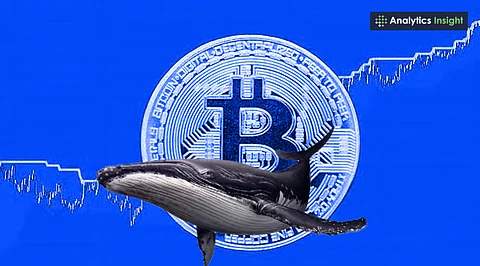

Bitcoin’s price is driven by scarcity, institutional demand, and global market conditions beyond whale moves or Elon Musk’s influence.
BTC adoption, ETF inflows, and regulatory clarity strengthen its role as a long-term Digital Gold.
Short-term volatility from whale movements and media hype does not change Bitcoin’s long-term growth trend.
Bitcoin’s price is shaped by a complex mix of economic, technological, and market forces. While the market often reacts to tweets from influencers like Elon Musk or large whale movements, these are only surface-level triggers. The true price of Bitcoin comes from its limited supply, institutional interest, regulatory changes, macroeconomic conditions, and global adoption trends.
Bitcoin is designed to have a fixed supply of 21 million coins, making it inherently scarce. Unlike traditional currencies, no authority can print more Bitcoin. Every four years, a halving event reduces the reward miners receive for validating transactions. In April 2024, the reward was cut to 3.125 BTC per block.
This slowed the pace at which new Bitcoin entered the market. Historically, halvings have created long-term upward pressure on price as a lower supply meets constant or rising demand. This scarcity is one of the fundamental reasons Bitcoin is often referred to as digital gold.
Institutional investors have become a powerful force in determining the cryptocurrency’s price. In 2025, companies and financial institutions have embraced Bitcoin as both a strategic reserve and an investment asset. MicroStrategy, for example, added over 4,200 BTC in July 2025 at an average cost of $111,827 per Bitcoin. Spot Bitcoin ETFs have also driven massive inflows, totaling over $45 billion this year alone. These funds make Bitcoin accessible to traditional investors, creating steady demand and lending legitimacy to the asset class.
Government regulation has an immediate and lasting effect on Bitcoin price. Supportive regulations can boost investor confidence, while harsh restrictions can trigger sell-offs. In the United States, the introduction of pro-crypto legislation and the creation of a Strategic Bitcoin Reserve holding more than 200,000 BTC has provided a significant vote of confidence for the market.
Globally, clearer rules are allowing institutional investors to participate without fear of sudden legal crackdowns, which in turn strengthens long-term demand for Bitcoin.
The broader economy plays a crucial role in shaping Bitcoin price trends. When central banks signal lower interest rates or when inflation rises, investors often turn to Bitcoin as either a risk asset or a hedge against traditional currency weakness. In August 2025, Bitcoin trades around $114,000, down slightly from its July peak of $123,000.
This correction reflects the natural ebb and flow of market sentiment. Economic uncertainty or geopolitical events can push investors toward Bitcoin as a store of value, while periods of high stability can sometimes reduce demand for crypto assets.
Also Read - Is Switching from Bitcoin to Ethereum a Genius Move or Risk?
Large Bitcoin holders can influence short-term price movements when they move large amounts of BTC. In 2025, wallets holding over $10 million worth of Bitcoin increased by over 4 percent, signaling strong accumulation. Media headlines and social media amplify these whale movements, creating temporary volatility.
Tweets from influential figures or breaking news stories often cause sudden spikes or drops. However, these movements rarely determine the long-term price unless they align with larger market fundamentals.
Bitcoin’s price also depends on the health and usage of its network. A growing number of active wallets and transactions shows increasing adoption, which strengthens long-term value. The rise of Layer-2 solutions, like the Lightning Network, is improving Bitcoin’s scalability and usability.
At the same time, Bitcoin faces competition from other cryptocurrencies, including Ethereum and Solana. These alternatives attract part of the market’s liquidity, but Bitcoin’s brand and security remain unmatched, giving it an edge as the primary store-of-value cryptocurrency.
Mining Bitcoin requires significant investment in equipment and electricity, creating a baseline cost for each new coin. When prices approach production costs, weaker miners may leave the network, reducing supply and often stabilizing prices.
High energy costs or stricter environmental regulations can also influence production, indirectly affecting price trends. While mining costs were once considered the primary factor for Bitcoin prices, in 2025, institutional demand and global adoption will play a larger role in sustaining value.
Bitcoin price today is around $114,000 to $114,400, following a small correction from its July peak of $123,000. Key support levels lie between $110,000 and $112,000, while resistance is near $120,000 to $123,000.
Analysts suggest that breaking above $123,000 could open the path toward $130,000 to $143,000, while a dip below $110,000 might trigger short-term selling. Despite these fluctuations, long-term sentiment remains positive due to institutional inflows, supportive regulation, and Bitcoin’s limited supply.
Also Read - What is Bitcoin?
The price of Bitcoin is ultimately a reflection of a global shift in how money and value are perceived. Scarcity from a capped supply, growing institutional participation, supportive regulations, and rising adoption are the true pillars behind its market price.
Whales and influencers may dominate the headlines, but Bitcoin’s evolution into a strategic, long-term asset ensures that its value is increasingly determined by real economic forces rather than short-term hype.
